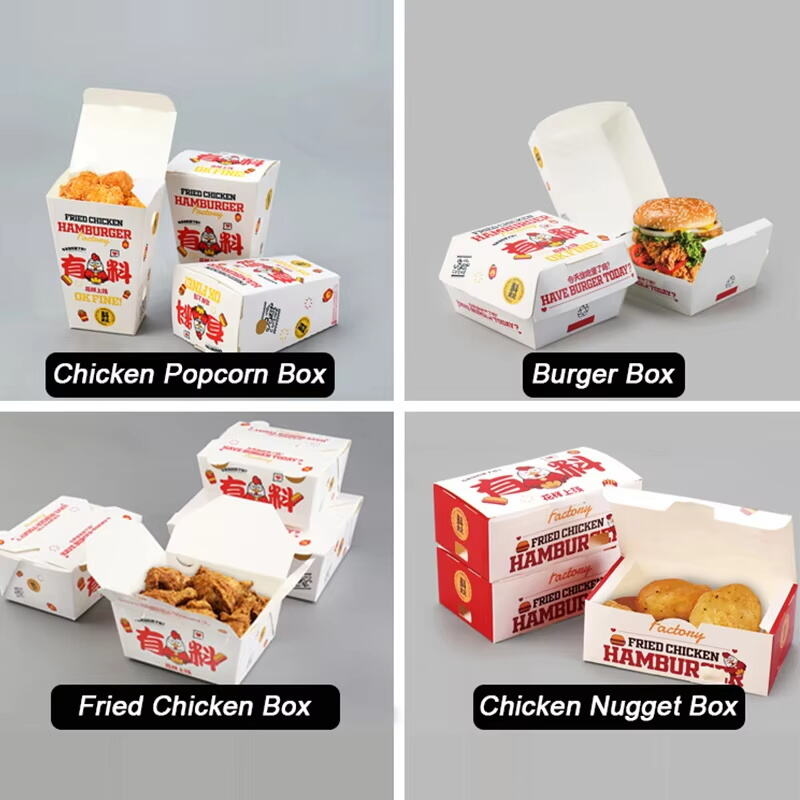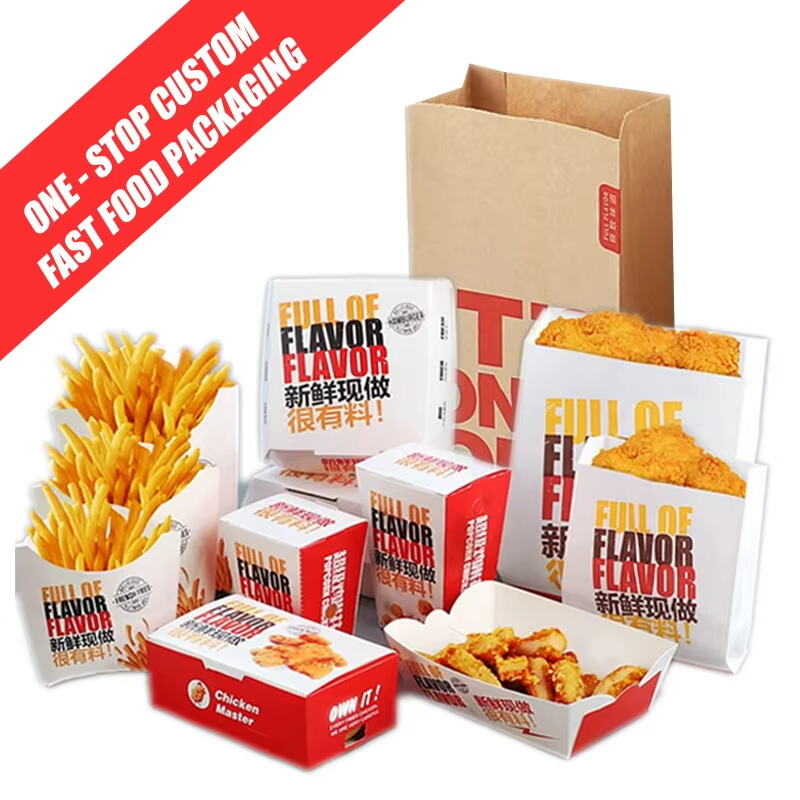Maintaining Temperature and Quality in Takeout Packaging
When it comes to food delivery or takeaway, nothing is more disappointing than receiving a soggy, lukewarm burger. The modern food service industry heavily relies on innovative packaging solutions, and one key product that has evolved significantly is the burger box. As consumers continue to demand better experiences from takeout, the burger box has become an essential element in ensuring food arrives hot, fresh, and ready to enjoy.
The Role of Insulation in Burger Box Design
Material Composition
The materials used in crafting a burger box are fundamental to its performance. Common options include paperboard, corrugated cardboard, and eco-friendly alternatives such as bagasse or molded fiber. These materials offer natural insulation properties and are often layered to trap heat efficiently. By choosing the right material, a burger box can prevent heat from escaping too quickly, thus preserving the temperature of the food.
Multi-Layer Structures
Advanced burger box designs often feature multi-layer structures. These layers can include air pockets or insulated linings, which serve as thermal barriers. This design minimizes heat transfer and helps retain the internal temperature of the food longer. Whether it's a short delivery or a long commute, the burger stays warm and fresh.
Moisture Control for Freshness
Ventilation Mechanisms
A good burger box doesn’t just keep food hot—it also keeps it from becoming soggy. Strategic ventilation is crucial. Tiny perforations or breathable panels are often included to allow steam to escape. This prevents condensation from forming inside the box, which would otherwise soften the bun and ruin the texture of the burger.
Grease-Resistant Liners
Many burger box designs include grease-resistant coatings or inserts. These help manage the moisture and oil content of the burger, keeping the packaging from becoming soaked and ensuring that the food inside retains its original taste and texture. These coatings also make the box more durable and easier to handle during transit.
Customization for Brand and Functionality
Size and Shape Optimization
Burger boxes come in a variety of sizes and configurations. Some are tailored for single-patty burgers, while others can hold larger, gourmet creations. Size optimization ensures that the food fits snugly without too much room to shift during transportation. A compact burger box prevents movement that can disrupt the layers of ingredients and affect presentation.
Branding Opportunities
A burger box also serves as a powerful branding tool. With custom printing, businesses can include logos, taglines, and vibrant graphics to enhance brand visibility. More than just a container, the burger box becomes part of the customer experience, reinforcing brand identity while delivering quality food.
Environmental Considerations in Burger Box Manufacturing
Sustainable Materials
As environmental concerns grow, more businesses are shifting to biodegradable and recyclable burger box options. Using sustainable materials not only reduces environmental impact but also appeals to eco-conscious consumers. These eco-friendly burger box designs still offer excellent insulation and moisture control, proving that sustainability doesn’t have to compromise quality.
Reusability and Disposal
In some cases, burger boxes are designed for limited reusability. Customers may choose to reuse a sturdy box for another purpose before discarding it. Moreover, clearly labeled disposal instructions help ensure proper recycling or composting. This attention to the end-of-life cycle makes a burger box more environmentally responsible.

Packaging Innovation and Customer Expectations
Evolving Consumer Preferences
Today’s consumers expect more from packaging than ever before. Convenience, quality, and sustainability are non-negotiables. The modern burger box must align with these expectations. With thoughtful engineering and creative design, the burger box can deliver both practicality and pleasure in a single solution.
Technological Integration
Some forward-thinking burger box designs integrate technology, such as QR codes or temperature-sensitive indicators. These features can inform customers if the food is still hot or guide them to promotional content. Innovations like these enhance user interaction and add a layer of sophistication to simple packaging.
The Impact of Burger Boxes on Food Delivery Services
Operational Efficiency
A reliable burger box design streamlines delivery operations. It reduces the likelihood of complaints and food returns, ensuring higher customer satisfaction. For food delivery apps and services, dependable packaging like a well-made burger box is crucial for maintaining reputation and efficiency.
Competitive Advantage
In a saturated market, the small details make a big difference. A burger box that keeps food hot and fresh gives businesses an edge over competitors. When consumers associate your brand with quality and reliability, they are more likely to become repeat customers.
Meeting Safety Standards and Regulations
Food-Grade Certification
All burger boxes must adhere to food safety regulations. This includes being made from food-grade materials that don’t leach harmful substances into the food. Adherence to these standards ensures that the burger box is not only effective but also safe for use.
Compliance with Packaging Laws
Different regions may have specific requirements for food packaging. Whether it’s labeling, material sourcing, or disposal instructions, manufacturers must ensure that the burger box complies with local laws. This protects businesses from legal issues and reinforces trust with consumers.
Trends Driving Burger Box Development
Minimalist Aesthetics
Many modern burger box designs favor minimalism—clean lines, subtle branding, and natural colors. This aesthetic trend resonates with younger demographics who value simplicity and sustainability. A minimalist burger box communicates sophistication and environmental awareness.
Personalization Options
Personalized packaging is becoming more popular. From custom messages to seasonal themes, a personalized burger box enhances the customer’s emotional connection with the brand. It turns an ordinary burger into a memorable experience.
Industry Applications Beyond Fast Food
Catering and Events
Burger boxes aren’t limited to fast food. They are increasingly used in catering services and event catering, where food quality and presentation are vital. The burger box ensures that large batches of food retain their temperature and appeal during transport and distribution.
Meal Kit Services
Meal kits that include pre-assembled burgers or DIY burger components benefit from high-quality packaging. A reliable burger box helps keep ingredients separate and fresh, ensuring that the final product lives up to consumer expectations. This extends the versatility of the burger box across different food service models.
FAQ
What materials are commonly used in a burger box?
Burger boxes are usually made from paperboard, corrugated cardboard, bagasse, or molded fiber, offering insulation and eco-friendliness.
How does ventilation improve burger freshness?
Ventilation allows steam to escape, preventing condensation and sogginess, thus maintaining the burger’s texture and temperature.
Are eco-friendly burger boxes effective in keeping food hot?
Yes, modern eco-friendly burger box materials are engineered to retain heat while minimizing environmental impact.
Can a burger box be reused?
Some sturdier burger boxes are suitable for limited reuse, and proper labeling often indicates how to dispose or recycle them responsibly.
Table of Contents
- Maintaining Temperature and Quality in Takeout Packaging
- The Role of Insulation in Burger Box Design
- Moisture Control for Freshness
- Customization for Brand and Functionality
- Environmental Considerations in Burger Box Manufacturing
- Packaging Innovation and Customer Expectations
- The Impact of Burger Boxes on Food Delivery Services
- Meeting Safety Standards and Regulations
- Trends Driving Burger Box Development
- Industry Applications Beyond Fast Food
- FAQ
